
Editor’s Note: We’re all dreaming of travel ahead. Here’s some inspiration for future adventures. We share places, products and activities we recommend. If you make a purchase using a link on our site, we may earn a commission.
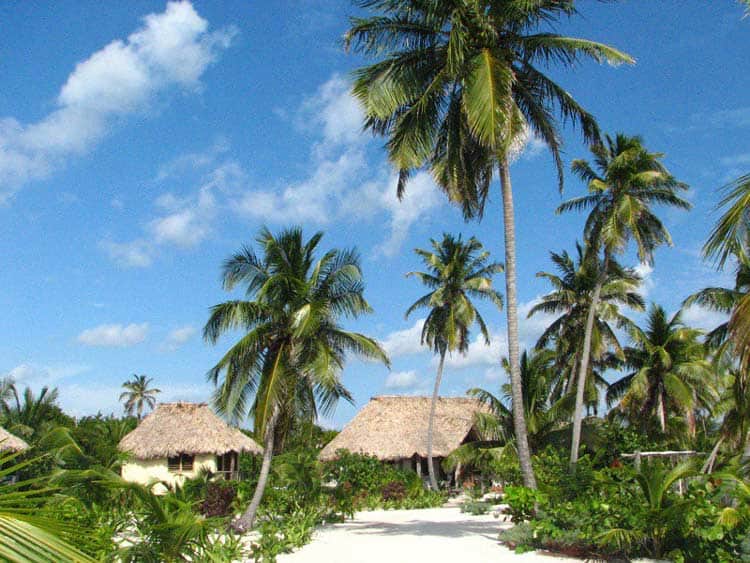
Southern Belize
“Look, there!” says Clive, our river-boat guide, pointing to a semi-submerged log next to the river’s mud bank. My eyes focus on it, yet I see nothing out of the ordinary, just a small log nearly covered by mud and dead leaves. Other passengers on the small outboard motorboat are excitedly pointing and taking pictures. Then the “log” moves, and two bulbous eyes and a tail emerge from the muck. The yard-long (1 m) baby crocodile wiggles before slipping sinuously beneath the water, leaving its protective-coloring leaves swirling atop the water.
The hair prickles on the back of my neck as I nervously note how close we are to the creature. Of course, we’re perfectly safe onboard the boat, but it’s a well-documented human response; the human brain is hard-wired to fear such creatures. It’s the first time I’ve seen a crocodile in the wild — in the wilds of a remote river in southern Belize, no less. My husband, Eric, and I are on a river cruise up the murky and mysterious Monkey River — one of the country’s major waterways — with seemingly endless jungle on both sides.
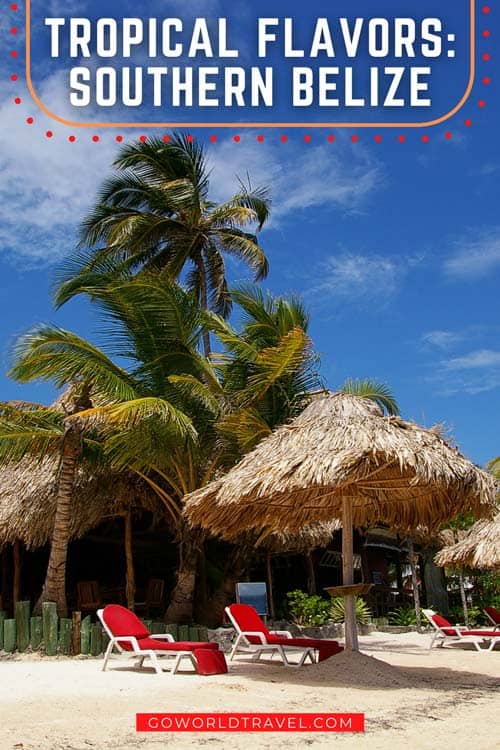
Trekking the Wilderness
There’s no other boat traffic here, just us and the Belize wilderness, as we motor past lush, impenetrable foliage topped by towering cabbage palms. Startled by the boat’s motor, a yellow-crowned night heron wings further up the river; a blue heron on a stump takes a “freeze-frame” approach, blending in with the shadows. Eric motions to a snag on the left bank, and I’m startled to see an iguana, the biggest I’ve ever seen — it’s the size of a small dog — perched motionlessly atop it like a gargoyle, its tail curled downward.
Clive, who speaks English with a Creole patois, explains this mysterious place to us. He should know — he was born and raised in a small native settlement on the river, and his knowledge is experiential. Moments later Clive nudges the boat’s bow into the riverbank and we climb off and onto a narrow path that winds through the undergrowth.
Pointing at a pod-shaped brown lump on a palm tree, Clive notes that it’s a termite nest. “If you are lost, you can eat them,” he suggests. “Yeh, LOT of termites in there.” In his grandparent’s time, they burned these nests and made a paste with oil to patch their dugouts, he says. Today, he sometimes takes the nests home and chops them up for the chickens.
A five-minute walk from the river, Clive motions to us to stop and be silent. There’s a soft murmuring. Clive raises his head, cups his hands, makes a sharp barking sound, then claps loudly. A howler monkey, a male, roars at us. The sound is startling, similar to a lion’s roar. Branches shimmer as baby monkeys shift farther from us, and the male shouts his challenge again, his neck expanding massively as he roars ferociously. Even though the monkeys are clearly not a threat, for the second time today I feel a visceral sense of alarm, and am glad to be in the company of a knowledgeable local guide.
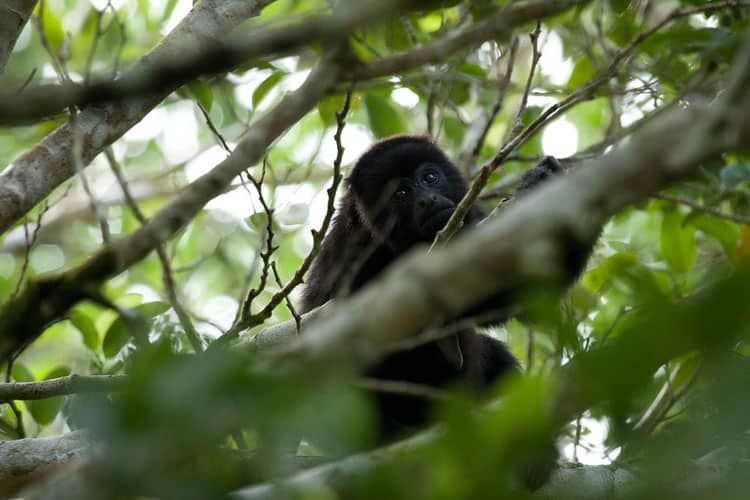
Palencia, Belize
An hour later it’s lunchtime, and Clive edges the boat up to a dock at Monkey River Town, a small, roadless settlement of 200 near the mouth of the river, where he lives. The village is about 15 boat miles (24 km) southwest of the rising tourism destination of Placencia, where our tour started. A former center for the lumber and banana industries, Monkey River Town had 2,500 inhabitants around 1900. With the decline of these industries the population dropped significantly, but the historic designation of “town” was retained nevertheless.
Delicious stewed chicken, rice and beans is the meal of the day in the cement-block diner, the only commercial establishment in the village. And those of us who just came off the boat are the only customers. When I buy a Coke, the curvy glass bottle is a throw-back to the 1950s. Barefoot kids, home from school for lunchtime, meander into tidy weathered shacks with chickens pecking in the yards. The setting is rustic, but life here seems much simpler and more relaxing.
After lunch, as we exit the river’s mouth and scud north in the sparkling Caribbean waters on our return to Placencia, Clive mentions that we need to keep an eye out for manatees, common near the mouth of the river. When they rise to the surface they stir up mud, so plumes of silt signify their proximity. We’re suddenly surrounded by boat-sized clouds of mud, and Clive cuts the engine. We peer through the murky water to see vague shapes shifting beneath the surface.
Back at the luxurious seaside Turtle Inn, owned by Francis Ford Coppola and situated near the tip of the Placencia Peninsula, Eric and I relax poolside. I shift in my lounge chair and a pool attendant rushes over to see if I require anything — a drink? A spritz from a spray bottle? A towel? But I’m quite content to soak up the sun’s rays, listening to the gentle soughing of the waves on the palm-fringed beach just beyond the pool. As the sun’s rays grow intense, we retreat to the cool comfort of our Balinese-style thatched cabana for a nap and later, a refreshing outdoor shower in our private courtyard.
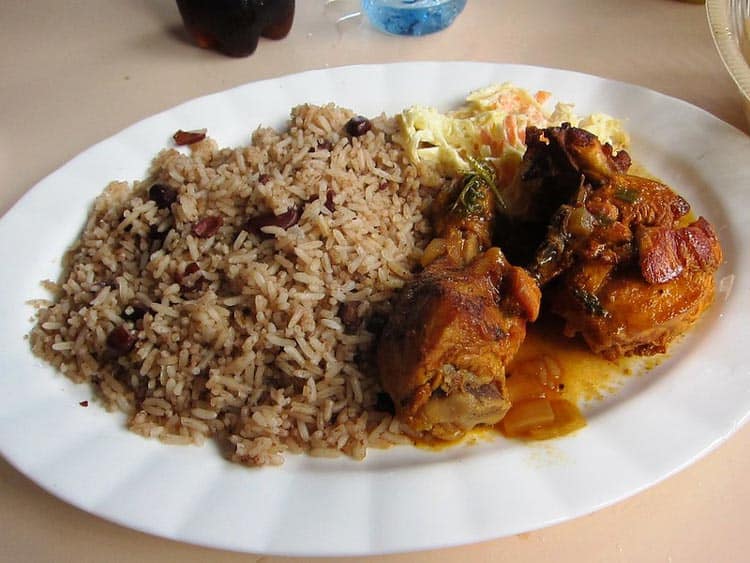
Stew-Chicken, Rice and Beans
This evening we’ll pass over the resort’s open-air restaurant with polished wait staff — the prices are high for what you get — and venture into the nearby sand-laned fishing village of Placencia. The laidback Belize village has a distinctly family flavor to it. Kids play soccer in a field while cheering moms hold babies and dads play with tots. A couple of kids pedal rusty bikes homeward clutching their purchases from tiny grocery stores bustling with evening shoppers.
Peering down lanes, we see foundations that were blown apart by Hurricane Iris in 2001, still awaiting renewal. Yet alongside many are trim houses in shades of turquoise and orange, accented by hot-pink and red bougainvillea spilling over walls. The road is lined with small cafes and funky gift shops. We peruse hand-written menus posted outside the cafes. Then we realize, with amusement, that every menu is identical — Daily Special: stew-chicken, rice and beans.
We want to explore a bit before settling in for dinner. Where the road dead ends at the beach, we turn right and tread through soft white sand, past brilliantly colored homes. A group of old men in rusty folding chairs enjoys beer and a visit around a split metal drum they’ve set up for a barbecue. Fishing nets lie crumpled at the base of a palm.
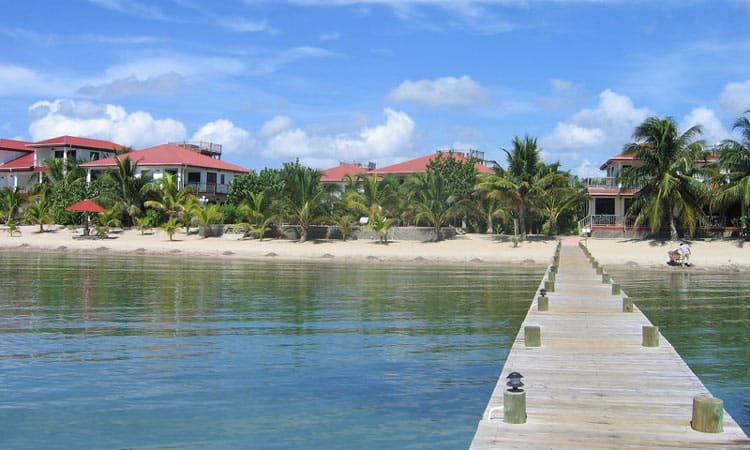
Melt into The Belize Night
Farther along, a tiny building with oval-shaped open windows and 50s-style dinette sets on a cement pad sports a sign that says: Merlene’s. We venture inside to inquire, and find Merlene, a large, grandmotherly woman in a dark alcove with a blackened, ancient-looking gas stove that looks like it’s been in use since the year she was born. She smiles warmly and urges us to sit, then serves us a splendid feast of fried conch and lobster with rice and beans.
We soon enjoy another taste treat, scoops of lime, pineapple and banana gelato at Lorenzo’s Tutti Frutti, located on the main street. Creamy and intensely flavorful, it’s the best gelato either of us has ever had. We inquire about the provenance of the gelato, and the slender, quiet man who’s serving us says he’s Lorenzo, and that he makes the gelato fresh daily from the area’s abundant tropical fruits of Belize. He grew up in a restaurant family in Italy, and his mother is from France. He spends nine sunny months of the year in Placencia and closes up shop to visit family in Europe during the summer — the perfect way to experience both worlds.
As the evening progresses we settle onto a wooden bench outside the gelateria for a warm chat with Lorenzo about what it’s like to live here. The pace of the village slows. The sky takes on the intense hues of the nearby houses. Crickets fill the air with their drone. And the heat of the day mellows until it feels silky smooth against my skin, like slipping into a body-temperature pool.
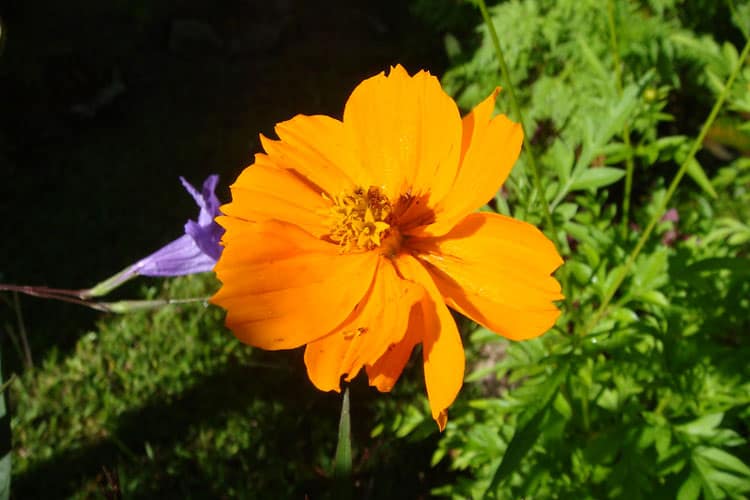
If You Go
Placencia, located at the tip of the Placencia Peninsula, 100 miles (161 km) south of the international airport in Belize City, is quickly becoming a tourism center, with new resorts springing up regularly along its 16 miles (26 km) of white-sand beaches. Despite the growth, it has managed to hold onto its small-town feel and friendliness.
You can get to Placencia from Belize City via rental car or bus (although this is reputed to be a long, rather uncomfortable ride) or by means of Tropic Air, which has five daily flights. The town is a stepping-off point for numerous adventures, ranging from snorkeling and diving to fishing, sailing and exploring nearby Mayan ruins.
Monkey River boat trips are a key ecotourism draw in southern Belize. Most trips originate from a marina in Placencia or the Inn at Robert’s Grove, approximately five miles (8 km) farther north.
Find your airline, transportation and hotel in one sitting through Travelocity here.
If staying in your own luxury condo is more your style then check out VRBO and the variety of listings available in Belize here.
Placencia
Belize Tourism Board
- New Florida, Old Soul: Why Port St. Lucie Should Be Your Next Sunshine State Escape - July 1, 2025
- Samaná: The Dominican Republic’s Lush Peninsula Where Silence is Golden and So Is the Sand - July 1, 2025
- Europe’s 12 Most Interesting Museums: From Underground Salt Mines to Chocolate Fountains - July 1, 2025
